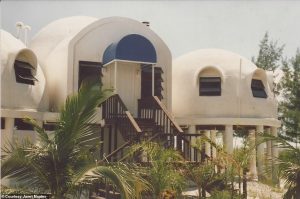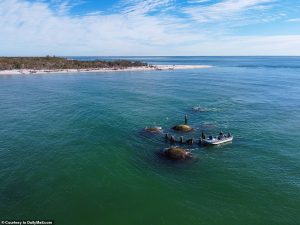
The Dome House on Cape Romano, circa 1983. Courtesy, Janet Maples
Whenever large hurricanes strike Florida there is always renewed talk in the recovery process afterward about whether we really should be building (and rebuilding) in coastal and other low-lying areas that are vulnerable to destructive winds, flooding, and erosion. We were reminded of this longstanding debate again – and of the unconquerable power of Mother Nature – when we read last week about the final demise of Florida’s iconic “Dome House.”
When it was built in 1981 on the tip of Cape Romano just south of Marco Island on Florida’s Gulf Coast, the spherical house was billed as being hurricane proof. It was built a quarter of a mile back from the shoreline on tall pilings to stay dry. Its series of six geodesic domes were designed to deflect 150 mph winds. The original builder and owner lived in the 2,400 square foot, three bedroom home until 1992. That’s when Hurricane Andrew struck South Florida and its Category 5 winds extended across the coast and blew out the homes’ windows, causing massive water damage. It also changed the landscape of Cape Romano, accelerating beach erosion. The home was abandoned two years later.

The remains of the Dome House in late fall 2022. Courtesy, Daily Mail
By 2010, the eroding coastline came right to the dome house’s front steps and in the years since it has been totally surrounded by water, an odd curiosity and popular sightseeing and fishing spot for boaters. In 2017, Hurricane Irma swept away two of the six domes. Then this past September, Hurricane Ian finished the job that Andrew started, as the home is now completely submerged except at extreme low tide. You can read more about the fascinating history of the “Dome Home” and a picture library of its life in this terrific Daily Mail article.
See you on the trail,
Lisa

